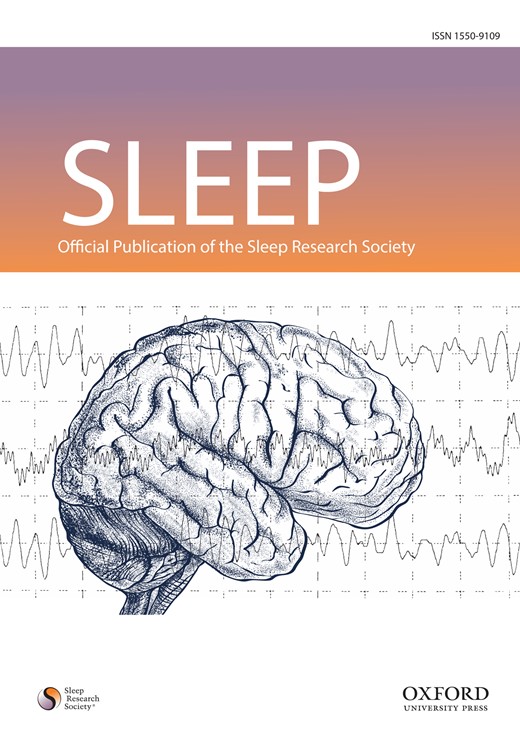-
PDF
- Split View
-
Views
-
Cite
Cite
Daniel P. Brunner, Derk-Jan Dijk, Alexander A. Borbély, Repeated Partial Sleep Deprivation Progressively Changes the EEG During Sleep and Wakefulness, Sleep, Volume 16, Issue 2, March 1993, Pages 100–113, https://doi.org/10.1093/sleep/16.2.100
Close - Share Icon Share
Summary:
The effect of repeated partial sleep deprivation on sleep stages and electroencephalogram (EEG) power spectra during sleep and wakefulness was investigated in nine healthy young subjects. Three baseline nights of 8 hours (2300–0700 hours) were followed by four nights with 4 hours of sleep (2300–0300 hours) and three recovery nights of 8 hours (2300–0700 hours). Sleep restriction curtailed sleep stages 1 and 2 as well as rapid eye movement (REM) sleep, but left slow wave sleep largely unaffected. In the first two recovery nights, total sleep time and REM sleep were enhanced, and sleep latency was shortened. Slow wave sleep was increased only in the first recovery night. In accordance with the prediction of the two-process model of sleep regulation, slow wave activity (SWA; spectral power density in the 0.75–4.5-Hz range) in nonrapid eye movement (NREM) sleep increased by approximately 20% in the first night following sleep restriction, remained at this level in the subsequent 3 nights and decreased immediately after the first recovery night. In contrast to these immediate changes, progressive and more persistent changes were seen in the EEG activity of higher frequencies. Thus, activity in the upper delta band tended to gradually increase from night to night during the sleep restriction period, whereas after an initial increase, activity in the theta-alpha band changed in the opposite direction. The progressive changes were also present in the EEG spectra of REM sleep and wakefulness. Because the time course of these changes paralleled the cumulative deficit in REM sleep, they may represent a correlate of REM sleep pressure.
Author notes
Present address: Psychiatric University Clinic, Wilhelm Klein-Strasse 27, CH-4025 Basel, Switzerland.





Comments